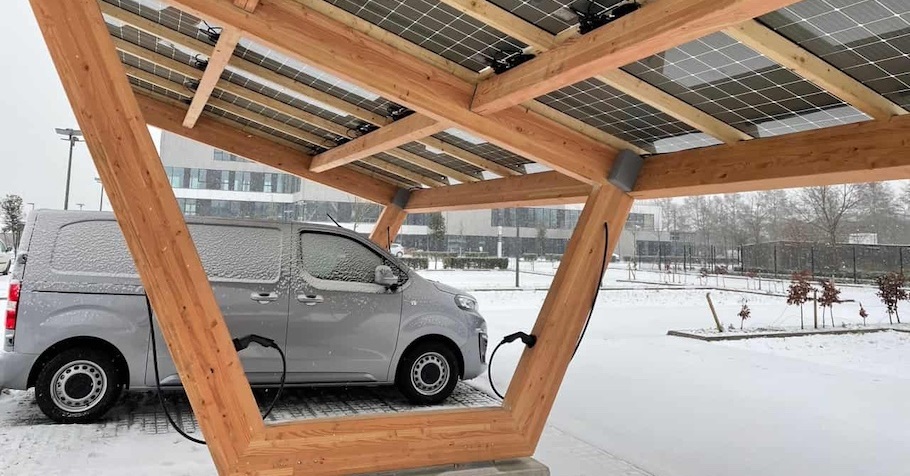In a conversation with Mobility Portal Europe, Luca Rossini, Co-founder and CEO of Rossini Energy, provides his views on the implementation of the Alternative Fuels Infrastructure Regulation (AFIR), from his perspective as an installer of chargers and solar carports.
Rossini comments that the goals set by the AFIR, which came into effect on April 13, are “achievable”.
These goals primarily focus on facilitating access and transparency in electric vehicle (EV) recharging.

In fact, the CEO states, “Rossini Energy already met the AFIR targets before they were published; we are ahead in that regard.”
The most significant modifications include the requirement for charging points to offer pay-per-session options without the need for any subscription, price transparency, and access to energy consumption data.
Additionally, devices must be able to communicate with each other to optimize the use of the electricity grid and improve the user experience.
Regarding Charging Point Operators (CPO), the AFIR states that they will be obliged to publish information about their stations, such as location, connector type, and available power, among other relevant data, on a publicly accessible platform.
Rossini also points out that, alongside meeting the AFIR requirements, CPOs will need to invest more in solar carports.
“Users should use renewable energy because that is really the idea; if you charge your car with solar energy under a parking lot, that’s what really makes sense,” he indicates.
Indeed, in several European Union (EU) countries, there is a growing trend of transforming parking areas into spaces equipped with solar panels.

In fact, in France, this was established as a legal requirement, thus generating greater demand for this type of initiatives.
It is worth mentioning that, in July 2023, the French government enacted the law known as the Law on Energy Transition and Green Growth, which requires operators to place solar panels in parking areas with a capacity of 80 spaces or more.
According to French authorities, it is estimated that the resulting photovoltaic parking lots could produce between nine and eleven gigawatts of energy, which is approximately equivalent to the capacity of ten nuclear reactors, and reduce 2.5 million tons of CO2 per year.
Challenges when installing chargers in France
Luca Rossini remarks that, when fitting a charging device in the country, the difficulties encountered are not too significant for the company.
“We used to have government subsidies, but they no longer exist. So nowadays, if you want to establish an electric charger, it’s just a matter of carrying out civil works and running the cables, which I don’t see as a problem,” the executive mentions.
However, he expresses: “You might face bureaucratic hurdles if you insert in an underground parking lot, at least 2 meters below ground.”
“In those cases, it’s not possible to put in place chargers unless the firefighters authorize you due to the risk of lithium fires. It is difficult to obtain,” he adds.
Currently, the French company is working on Vehicle-to-Home (V2H) prototypes, meaning, “devices that allow you to charge your car but also discharge energy to power your home with green energy during the night.”
The founder explains the reason for choosing this system instead of Vehicle-to-Grid (V2G): “V2G bidirectional charging is still unclear for the market.”
“The regulatory framework is not established, and economically it’s not ready either,” he adds,
Read more: V2G, V2B, or V2H? gridX predicts the dominant force in bidirectional charging
What is needed to accelerate electromobility in Europe?
According to Luca Rossini, the two fundamental pillars for a faster adoption of electric vehicles lie in changing people’s mindset and setting more affordable prices for zero-emission cars.
In this regard, Rossini considers that “it is too early to remove incentives in the industry” and that “they should be reintroduced”.
It’s worth mentioning that, between December of last year and January 2024, the French government phased out subsidies for electric cars manufactured outside the EU and also reduced subsidies for high-income buyers.
Additionally, Rossini believes that the introduction of Chinese manufacturers to the European market is an advantage.
“Having their cars will lower costs and only aid in the economic transition. We need to drive without CO2 as soon as possible,” he adds.
Finally, he concludes with a thought: “Why was it okay to import traditional cars from Korea, Japan, or the United States, and why shouldn’t we do it with electric ones?“








